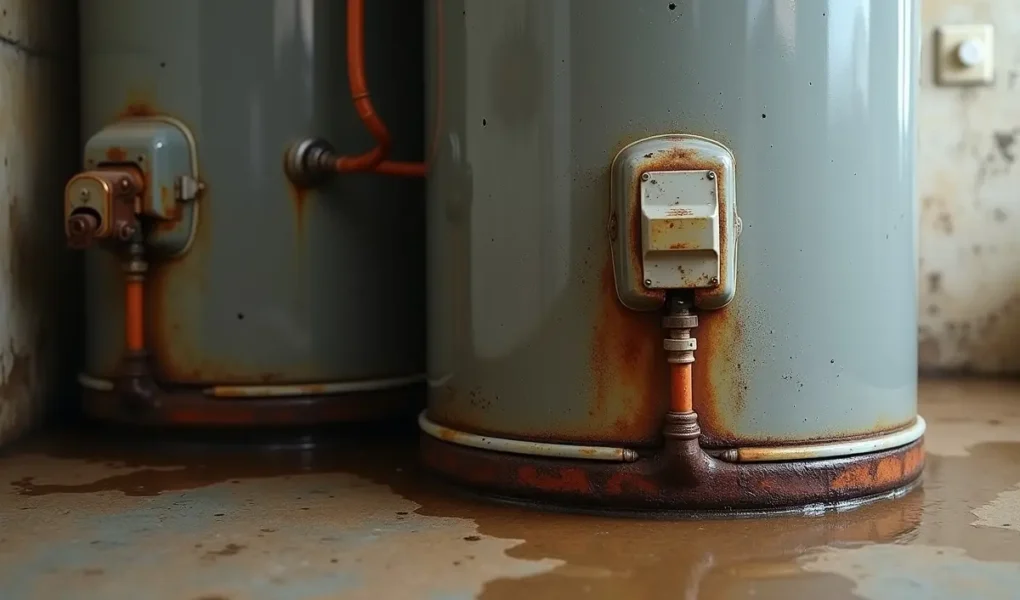Your water heater is one of those home appliances you probably don’t think about until something goes wrong. One morning, you’re greeted with icy cold water when you were expecting a warm shower, and suddenly, it’s all you can think about. Sound familiar? If you’re facing problems with your water heater, don’t worry—you’re not alone. Here are eight common issues that many homeowners face and what you can do to fix them.
1. No Hot Water
When you turn on the faucet and only get cold water, it’s usually an indicator that something is wrong with the heater. This is probably one of the most frustrating problems and can stem from a few different things depending on the type of heater you have.
Electric Water Heater: A lack of hot water could mean an issue with the thermostat, a tripped circuit breaker, or a problem with the heating elements.
Gas Water Heater: If you’re using a gas heater, it could be a pilot light that’s gone out or a gas supply issue.
For both types, start by checking the circuit breaker or the pilot light. If those seem fine, it might be time to call a professional like Milestone Electric, A/C, & Plumbing, who will be able to get to the bottom of the issue. This isn’t the time for guesswork!
2. Water Isn’t Hot Enough
Is your water getting warm but not quite hot enough? This could be due to a problem with the thermostat settings or the heating elements.
Thermostat Settings: Sometimes the fix is as simple as adjusting the thermostat to a higher temperature. Make sure it’s set between 120-140°F for optimal comfort and energy efficiency.
Heating Elements: In electric heaters, the heating element might be faulty, which is something that would need replacement.
Before you call anyone, it’s always worth checking the settings to ensure it’s not just a matter of increasing the temperature.
3. Hot Water Runs Out Too Quickly
Does your hot water only last for a couple of minutes before turning cold? This is often due to sediment buildup inside the tank.
Over time, minerals from hard water can settle at the bottom of the tank, forming a layer of sediment. This layer makes it harder for your heater to keep the water warm and reduces the tank’s capacity for hot water. Flushing the tank at least once a year can help prevent this from happening.
4. Strange Noises Coming From the Heater
If your water heater is making strange sounds—such as popping, cracking, or rumbling—it’s likely due to sediment buildup. When the sediment layer hardens, it can trap water underneath. As the water heats, it causes the sediment to move around, making noise in the process.
Flushing the tank regularly can help prevent this issue. If the sounds continue after flushing, it might indicate a more serious issue that requires professional attention.
5. Water Heater Leaks
A leaking water heater is not only inconvenient, but it can also lead to water damage in your home. The source of the leak will help determine the solution.
Drain Valve Leak: Sometimes the drain valve at the bottom of the tank may be loose. Tightening the valve can often stop the leak.
Tank Leak: If the tank itself is leaking, this is a more serious problem. Unfortunately, a leaking tank usually means you’ll need to replace the entire unit, as there’s no fix for this.
Make sure to address leaks as soon as possible to avoid further damage to your home.
6. Rusty or Discolored Water
If the water coming out of your faucets looks rusty or discolored, your water heater could be to blame. This is usually a sign that the tank is rusting from the inside, and it’s a problem that needs immediate attention.
Rust in your water can indicate that the anode rod inside your water heater has deteriorated. The anode rod is designed to attract rust-causing minerals, but once it’s worn out, your tank starts rusting. Replacing the anode rod can sometimes solve the problem, but if the tank is too corroded, you might need to replace the whole unit.
7. Low Water Pressure
Low water pressure coming from your water heater is often caused by sediment buildup or blockages in the pipes. This reduces the flow of hot water and makes it difficult to get decent water pressure in your home.
Sediment Buildup: Over time, sediment can clog the pipes and reduce water flow. Flushing the system can sometimes help restore pressure.
Blockages: If flushing doesn’t work, you might have a blockage in the pipes leading from the water heater. This is something a plumber can help with.
8. Water Temperature Fluctuates
Does the temperature of your water go from hot to cold in an instant, without warning? Temperature fluctuations can be caused by an issue with the thermostat, or it might be due to the size of your water heater.
Thermostat Issues: If the thermostat is faulty, it won’t regulate the temperature properly. Try resetting it or adjusting the settings.
Wrong Size Heater: If you have a large household and your water heater is too small to keep up with the demand, it may be time to upgrade to a larger unit.
In some cases, water temperature fluctuations are a sign of an electrical issue, so if you’re unsure, it’s always best to consult a professional.
What’s Next?
Water heater problems are never fun, but they don’t have to be a major headache. Many of the issues we’ve discussed can be solved with a little bit of maintenance or a quick call to a professional. If you’re regularly flushing your tank and checking for warning signs, you can prevent many of these problems from ever happening in the first place.




